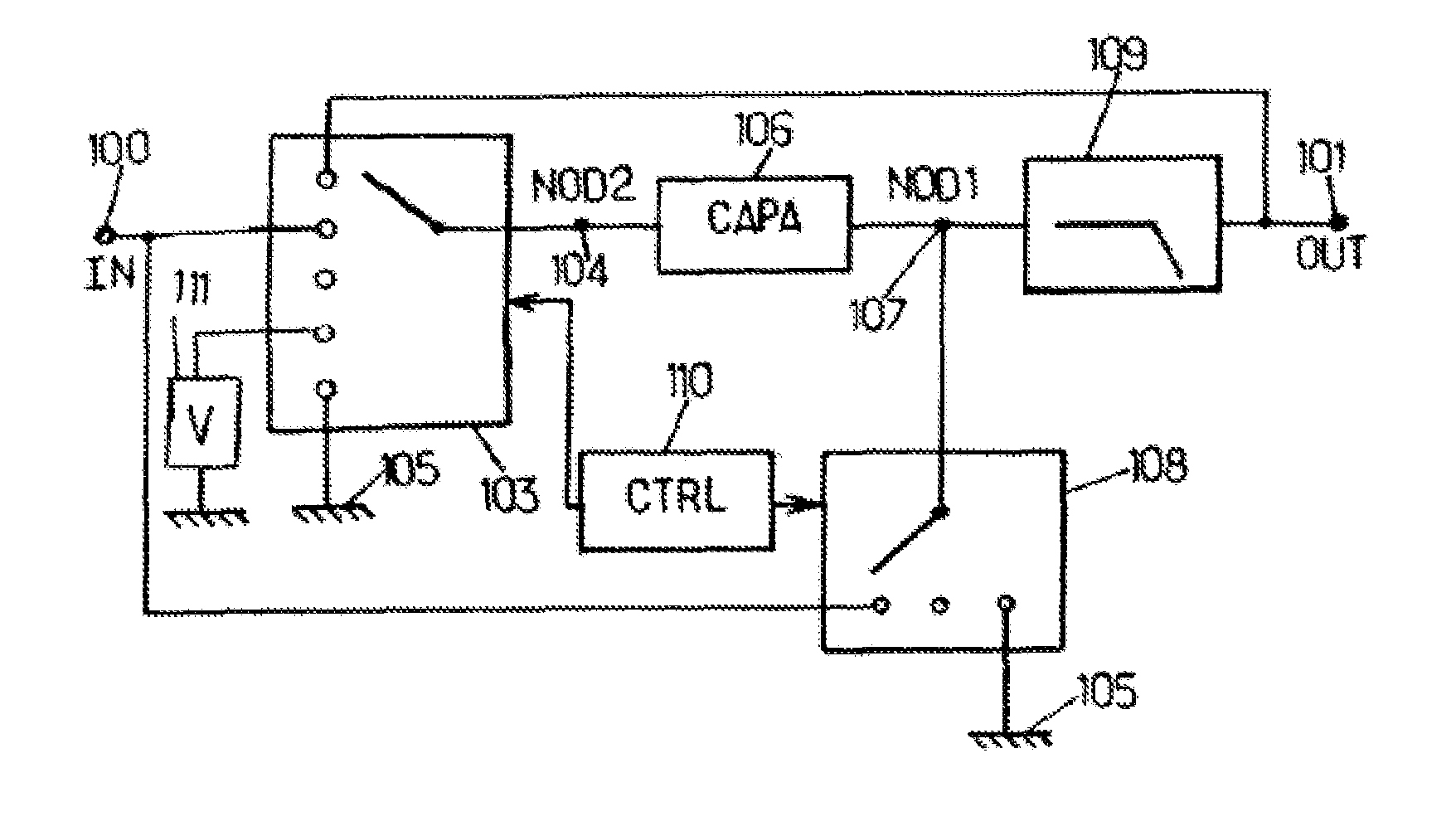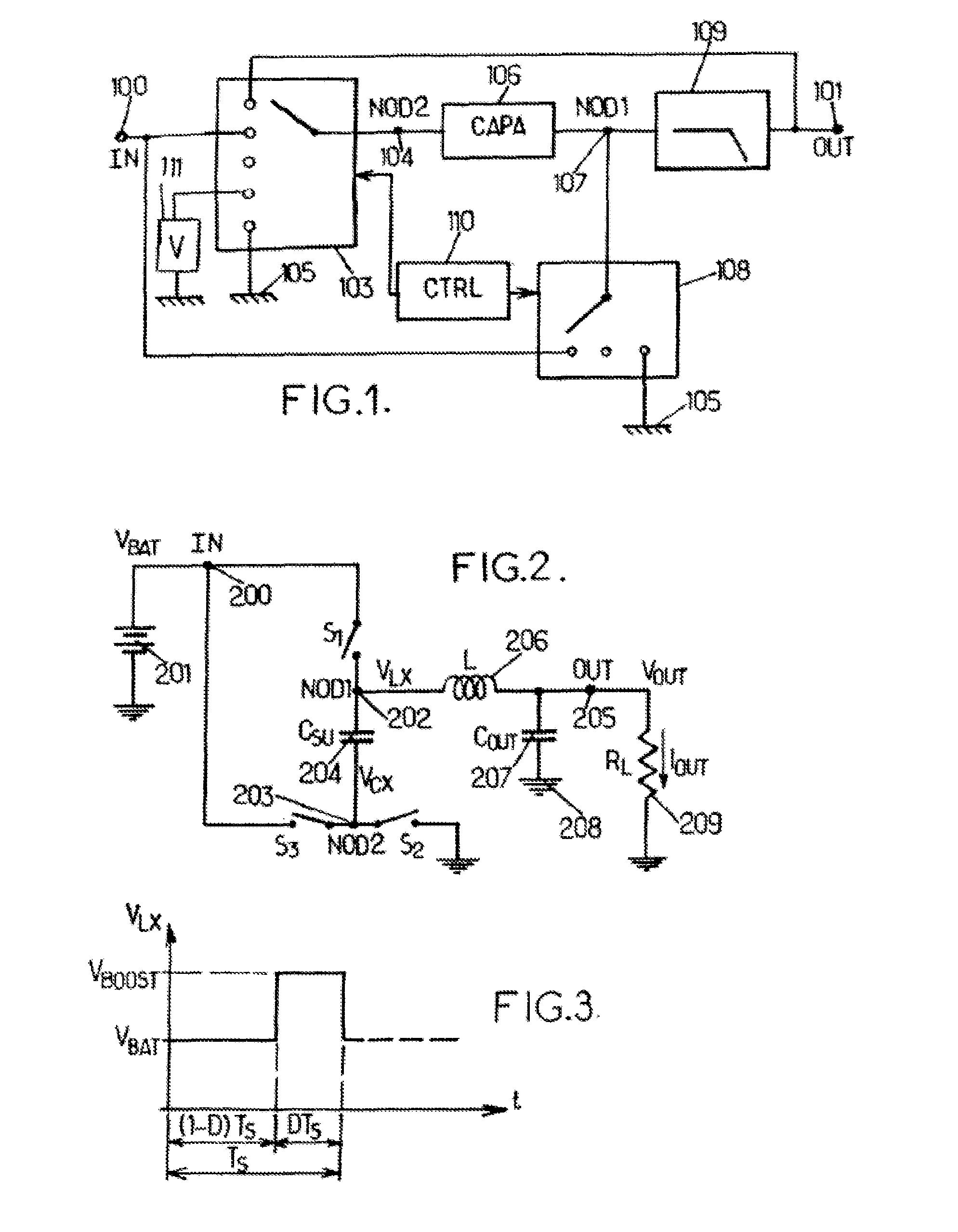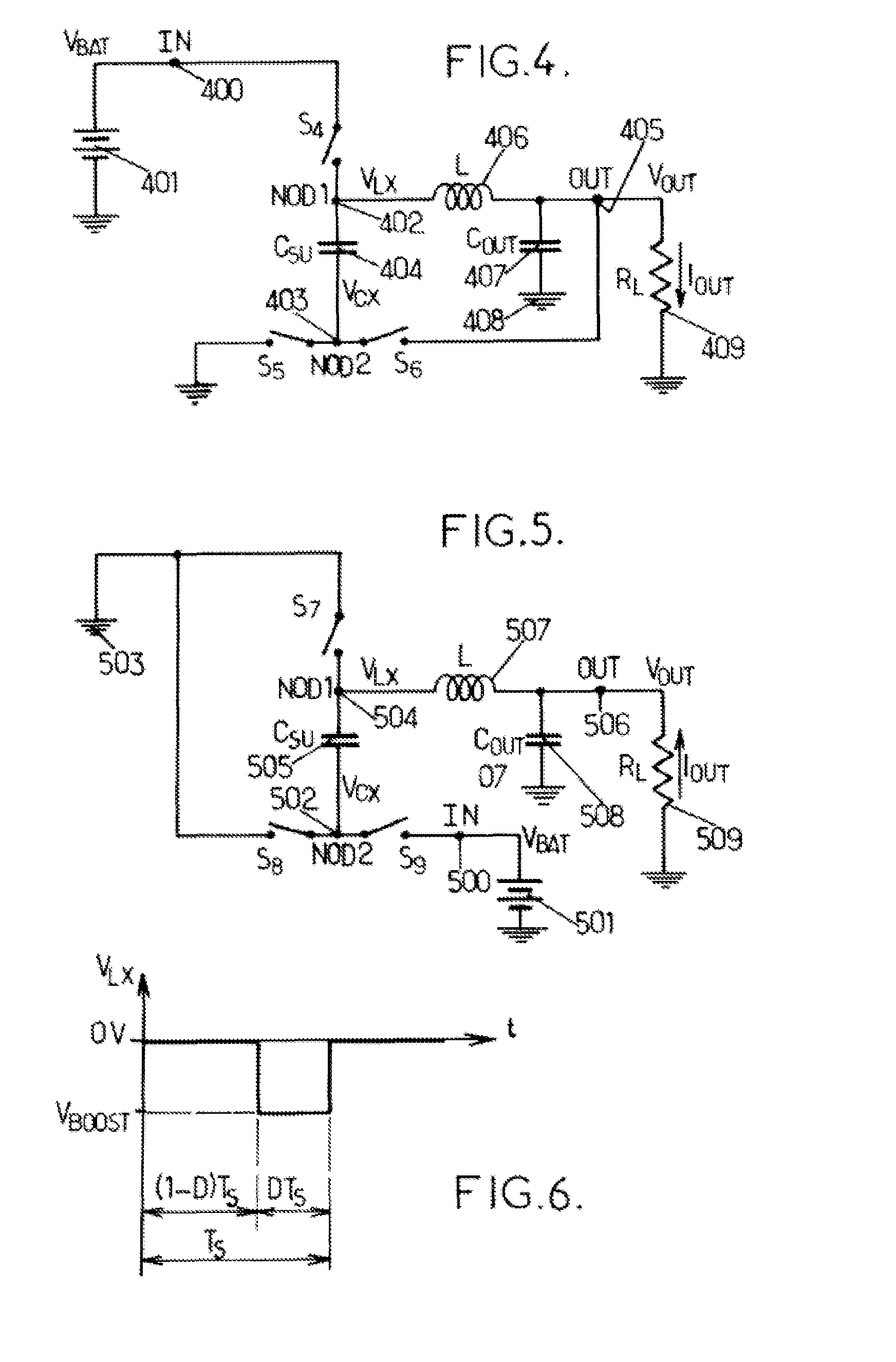Direct Current Voltage Conversion Circuit
a conversion circuit and direct current technology, applied in the field of electronic circuits, can solve the problems of reducing energy efficiency, generating large ripples in output voltage, and limited use of architectures, and achieves the effects of reducing ripple, reducing energy consumption, and reducing energy consumption
- Summary
- Abstract
- Description
- Claims
- Application Information
AI Technical Summary
Benefits of technology
Problems solved by technology
Method used
Image
Examples
Embodiment Construction
[0105]A circuit architecture according to one embodiment is now described with reference to FIG. 1.
[0106]The circuit according to this embodiment comprises an input terminal 100 for receiving a DC input voltage to be converted. For example, the terminal 100 is connected to a battery supplying a voltage to be converted.
[0107]The circuit also comprises an output terminal 101 providing a DC output voltage substantially proportional to the input voltage.
[0108]The input terminal is connected to a switching module 103. This switching module allows selectively applying different potentials to a node 104 of the circuit, as a function of the phases of operation of said circuit. For example, the switching module 103 can apply a reference potential (for example the potential of the ground 105 of the circuit), the potential of the input terminal, the potential of the output terminal, or a potential generated by a dedicated module 111. For example, said module 111 is a linear regulator which del...
PUM
 Login to View More
Login to View More Abstract
Description
Claims
Application Information
 Login to View More
Login to View More - R&D
- Intellectual Property
- Life Sciences
- Materials
- Tech Scout
- Unparalleled Data Quality
- Higher Quality Content
- 60% Fewer Hallucinations
Browse by: Latest US Patents, China's latest patents, Technical Efficacy Thesaurus, Application Domain, Technology Topic, Popular Technical Reports.
© 2025 PatSnap. All rights reserved.Legal|Privacy policy|Modern Slavery Act Transparency Statement|Sitemap|About US| Contact US: help@patsnap.com



